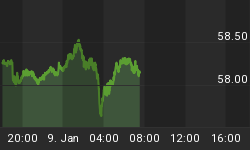Short term, the market has a positive bias due to the Liquidity coming in ... but what about the long term picture?
Today's chart is for reference for the economy as we approach a double top test on the NYA Index. First, Institutional Investors love the S&P 500 because it is a good reflection of the economy due to its representation of diverse sectors. With that said, take a look at the pattern for the SPY (ETF for the S&P 500.) that we posted below.
What pattern do you see? The pattern since 2009 is one that is described as a rising wedge. This is a pattern where the slope of the upper resistance line continues to converge with the rising slope of the support line. If they go on long enough, they eventually converge in an apex where a forced breakout has to occur.
Historically, the breakout occurs to the downside. WIth increasing Inflowing Liquidity levels pushing the market higher, it would not be unusual to see another upside breach of the resistance line.
The big question has to do with sustainability. Can a rise above the resistance line initiate a new rising slope that is higher than the current one and can it be one that maintains the element of sustainability?
The key work here is "sustainability". Because it has never been tested, no-one know how long such a condition could be sustained with the support of increasing liquidity.
This is how long it can last: It can last until the confidence in the value of printed money breaks down, or until there is an international skirmish of a serious nature. With those two possibilities, this becomes a market where hedging is a smart thing to do.
Why not? We insure our homes, our cars, and our lives ... why not insure our investments when the risk levels are concerning?

A decent book on how to Hedge is: "Buy and Hedge: The 5 Iron Rules for Investing Over the Long Term" by Jay Pestrichelli and Wayne Ferbert
















